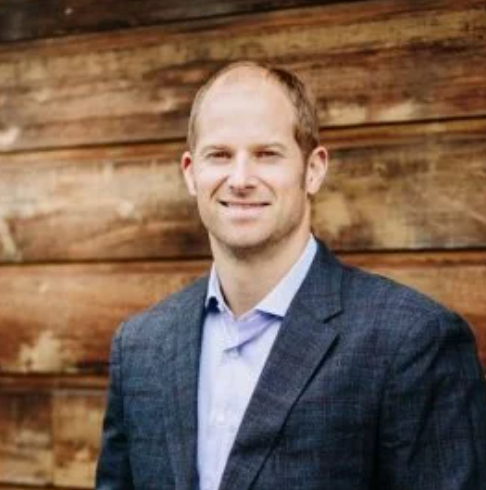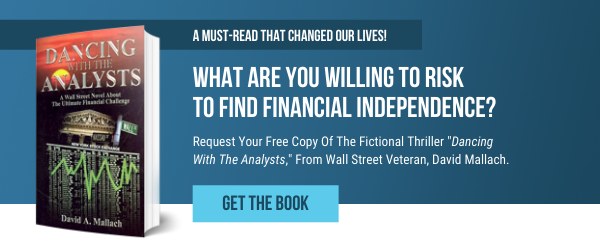Let’s talk about prospecting, which is something I think of often.
Imagine you meet with a prospective client who was referred to you. You have a great first meeting, learn more about them; you build rapport. Maybe they bring you their financial statements for the first time. Or maybe there is a follow-up conversation, and they share with you steps they have taken on their own or with another advisor. In the past we would typically follow up these first encounters with something in writing that reflects a deeper conversation about their assets – which by the way, differs from what we do today, but we will get to that in a minute. In the past, we would have followed up with a written piece, call it an investment proposal, essentially an outline of our Growth Strategy or Income Growth Strategy.
While the Discovery meeting is about the prospective client, it is also an opportunity to talk to the client about my passion for making money for people. It’s not solely about the X’s and O’s of what to buy or sell, but rather the philosophy behind it. It gives me the opportunity to talk about our why, why we believe so much in what we do and how we do it. In my mind, what better way to follow up this conversation than with an investment proposal, a real-life presentation of how we would invest their money were we to be investing it today…makes sense, right?
Recently, I went back and looked through the folder that houses all the proposals we've made to prospects over the years and compared them with those that became clients. I did this on a firm-wide basis, not just my own prospects, but prospects that everyone at the firm had brought in and for whom Beck Bode had generated an investment proposal, provided I was involved in some way (which applies to most of them). I calculated a conversion ratio of around 65%. That’s six and a half people out of every ten, which had it been my batting average in my baseball playing days, I probably wouldn't be here. Many people would think that’s quite acceptable – a 65% close ratio.
I decided to dig deeper. About two and a half years ago, I changed our process a bit and switched to a follow-up document that is not an investment proposal, but something we call an Investment Policy Statement (IPS). It’s a more comprehensive document that includes how we will be in relationship with each other as advisor and client. I proceeded to compare our prospect conversion data for that period and discovered a close ratio that is greater than 90%. More than nine people out of ten became clients once we switched to using the Investment Policy Statement.
I’ve given some thought to what this shift in close ratio really means. One of the answers I came up with that is that what I may have been presenting in the past is more a portfolio than it was a specific dollar-denominated financial plan. And that however correctly the equity portion of the portfolio was being arrived at – correctly rooted in our belief in equities, correctly based in our belief in our clients’ long-term objectives, retirement income, legacy, etc., the means to the end was best accomplished using a portfolio consisting entirely of equities.
However correct that philosophy was and is today, it was specific to a portfolio versus being dictated by the mathematical truths of an actual plan. In a real plan, the equity allocation is calculated mathematically from the client's own stated needs. This cannot be ignored. When you think about the meetings that you've held with prospective clients and whatever you use to make your point, whether it is an investment portfolio or investment proposal, or some other type of document or no document at all, if the equity allocation is calculated mathematically from the client's own stated needs, can it really be rejected as being too heavily weighted in equities? Could the 100% composition in equities legitimately be a reason for a client’s objection to the plan?
Particularly since an exclusively equity-based plan can be the way to the client’s stated goals, in my opinion, it must be shown to be the only way to achieve a client's needs. A retirement income plan is built backward into the accumulation phase of a client's life and/or forward into the withdrawal phase. The retirement income plan depends on one critical number. That number is the basis of everything, and it represents the dollar amount the client will need to withdraw from their investments in the first year of retirement.
Any retirement income plan worth its salt must begin with an understanding and agreement between you and the prospective client as to just what that number is. We calculate that number at four and a half percent, the comfortable withdrawal rate in the first year of retirement. That gives you the capital sum, a client will need in retirement.
Let me spell this out perhaps more simply. Say you've got a client who’s ten years away from their desired retirement date. And let's say for easy math’s sake that they're spending about $100,000 a year. The first thing that we do is we add on the effects of inflation over those ten years. At the historical rate of inflation of 3%, for $100,000 spent today during that first year of retirement, the client will in fact need to generate $134,000. That reflects the 3% per year compounding of the trendline inflation rate. What does this mean? You take $134,000 and divide it by your rate of withdrawal in the first year, and you arrive at the approximate sum of capital that a client will need to have accumulated by that first year. In this simplistic example, that number is roughly $3 million.
If the client is still in the accumulation phase they likely do not currently have the capital sum needed. Plus, we work in anywhere from 18 to 24 months of living expenses is to be set aside as a safety net, as a reserve source of income, so that if we do face a severe and protracted equity market decline particularly in the early years of retirement, it’s there for them. But if they don't have that capital sum, then we know how much more capital that client needs to accumulate between now and retirement. It seems probable that in most cases the client will need the historical return of equities, rather than that of say, bonds, to achieve their growth objective. Therefore, the client doesn't have the luxury of saying that the plan contains an allocation that’s too heavily weighted in equities.
The same thought process holds true for a client who’s already retired -- yes, a person who is already in the distribution phase of their life. The first year of distribution need calculated at a 3% a year trend line inflation number gives you the projected curve this client faces. If you think about this person’s cashflow, the projected curve represents the dollars that will be needed throughout retirement. And the greater the margin between the calculated four and a half percent withdrawal rate we just discussed along with the accommodation for 3% per year rate of inflation, the greater the margin of victory for your assets outliving you. When you compare this to the total return of the portfolio, the better protected the withdrawal program is, the more that will be left potentially to the client’s heirs. So, I've got to ask, “What exposure to equities then, Mr. And Mrs. Client, is “too much” given the necessity to achieve these goals?”
I can't be sure how you are discussing this with your clients, but my guess is that many advisors have not shifted, as I did a few years ago, to really focus on what’s most important, namely the achievement of the client’s long-term objectives. And to do that, you need to present the obvious: however vital a specific investment strategy may be, and however passionate we may be about it, nothing is more important than being able to tell a client the real, honest answer as to what they need to retire or how they need to look at the distribution phase of their life. Once they've been shown mathematically that only equities will return, at historical trend lines, what is necessary to meet their stated goals, the prospective client will be a lot less able to counter the need for the appropriate equity weighting in their financial plan.
It takes an advisor who is truly, internally passionate in their belief in equities as the way, and in their commitment to be the one to help the client achieve their stated goals. And if the prospect still manages to object, then I think you know what to do. As I’ve said before, as much as Discovery meetings are about prospective clients interviewing us, make no mistake about it, we are also interviewing them. If a prospect still manages to object, then perhaps they've disqualified themselves from having the opportunity to work with you.
Ben Beck is Managing Partner & Chief Investment Officer at Beck Bode, a deliberately different wealth management firm with a unique view on investing, business and life.

 Benjamin Beck, CFP®
Benjamin Beck, CFP®